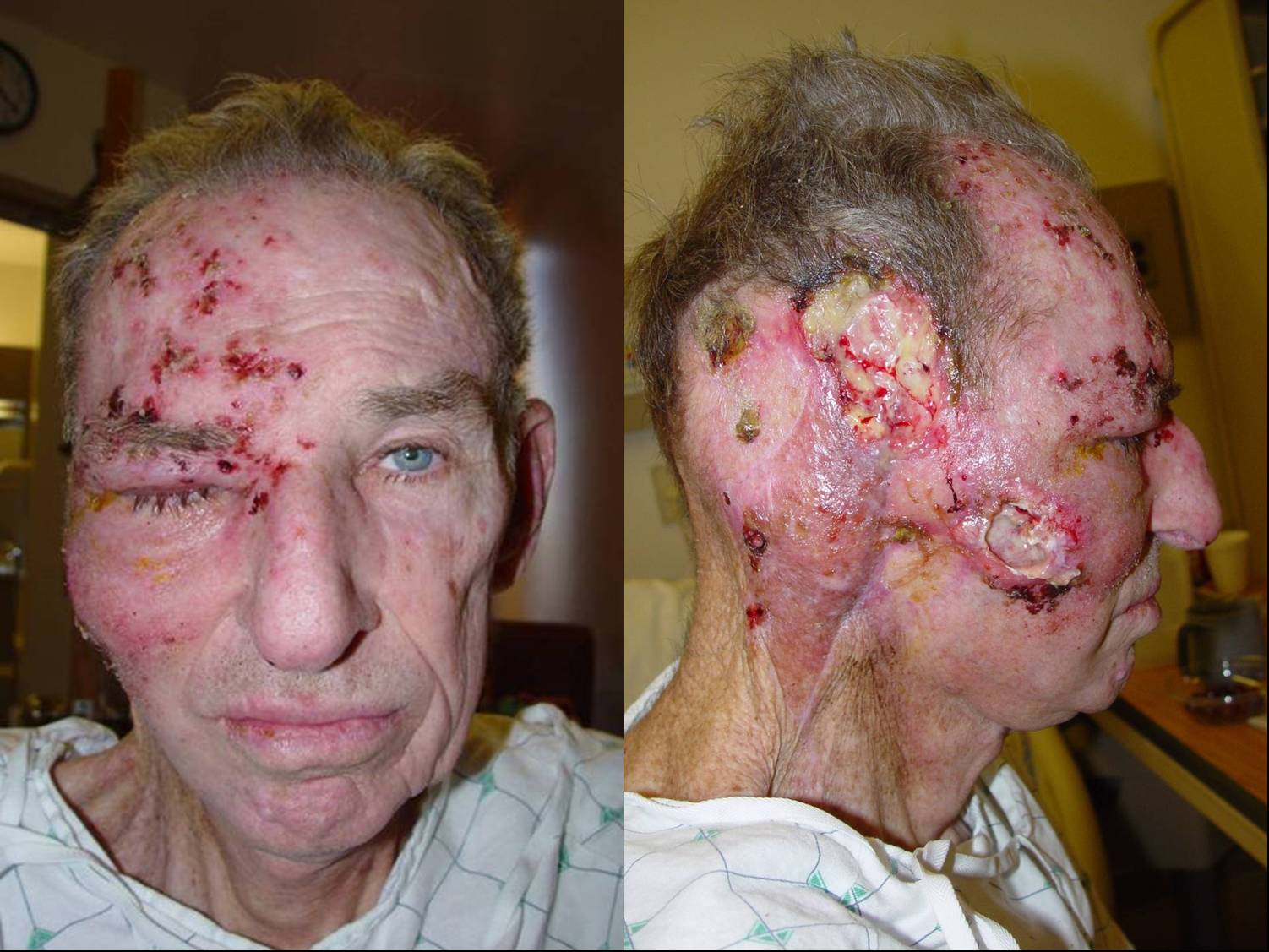Sunday, October 28, 2007
13116
Herpes Zoster after Reconstruction for Head and Neck Cancer
Background: Herpes zoster is the clinical syndrome that occurs when latent varicella zoster virus is reactivated from dorsal root ganglia. Patients with cancers of the head and neck are at significant risk for regional herpes zoster. The morbidity of zoster in the head and neck can be severe, including encephalitis, blindness, deafness, and debilitating post herpetic neuralgia. The risk of such morbidity can be significantly reduced with prompt initiation of therapy upon diagnosis; however, the diagnosis of zoster can be missed or delayed following head and neck reconstruction. Local tissue rearrangement and mobilization of distant tissues for soft tissue reconstruction can distort or efface classic dermatome anatomy, hindering identification of zoster by primary care providers. Surgeons performing reconstruction in the head and neck must be aware of zoster in the postoperative period, and take measures to guard against zoster associated morbidity.
Methods: A retrospective review of 350 consecutive head and neck reconstructions was performed to identify patients with documented cases of postoperative zoster. Patient demographics, perioperative course, cutaneous patterns of involvement, and clinical outcomes were recorded and analyzed.
Results: Six cases of zoster were identified, yielding an incidence of 1.7%. Mean age at diagnosis was 61.3 years. Age greater than 50, and suppression of cell-mediated immunity during adjuvant therapy were associated with incidence of zoster. Factors hindering diagnosis of zoster were dermatome distortion from tissue rearrangement, the presence of radiation dermatitis, suspicion of recurrent cancer, and confusion with bacterial infections. Islands of tissue at the site of distant and free flap transfers were typically spared from cutaneous lesions, consistent with their lack of common innervation with surrounding tissues.
Conclusions: The diagnosis of zoster can be difficult in the post-reconstructive period. A high index of suspicion, and close attention for a history of neuropathic pain preceding cutaneous lesions is crucial to allow prompt initiation of therapy. When managing postoperative skin and soft tissue infections in the head and neck cancer population, zoster should be included in differential diagnosis, and empiric antiviral therapy should be considered to minimize the risk of morbidity and severe complications. Vaccination against VZV should also be considered for routine preoperative prophlylaxis, especially in patients older than 50 and in patients with immunosuppression.

View Synopsis (.doc format, 2371.0 kb)
